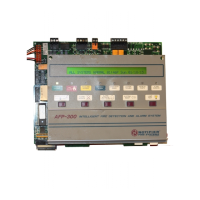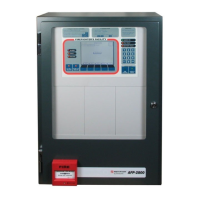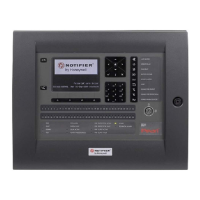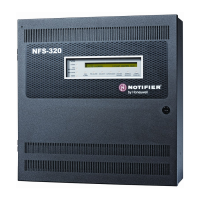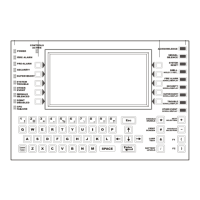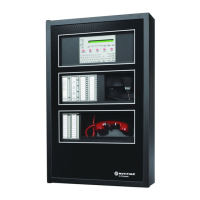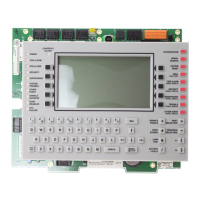118 AFP-3030 Programming Manual — P/N DOC-01-032:A 26/06/2015
CBE: Zones and Equations Equations
The detector at address L1D1 must be active, and the module at address L1M1 must be in an
active non-fire alarm state, for the equation to go active.
• The “AUTO(point argument)” Operator*
This operator will evaluate as “Active” if all of the SCS switches or specified switch group are
in the “Auto” position. When the SCS-8L/SCE-8L is disabled, the evaluation will be based on
the switch position prior to the disable.
Examples:
The switch associated with switch group 16 on Annunciator 1 must be set as “Auto” for the
equation to go active.
OR(AUTO(A1G16))
All the switches of Annunciator 1 must be set to “Auto” for the equation to go active.
OR(AUTO(A1))
• The “NORM(point argument)” Operator*
This operator will evaluate as “Active” if the entire SCS device or a specified switch group is
in a normal state.
Examples:
Switch group 16 on Annunciator 1 must be in the “normal” (no fault) state for the equation to
go active.
OR(NORM(A1G16))
(All switches groups on) Annunciator 1 must be in the “normal” (no fault) state for the
equation to go active.
OR(NORM(A1))
• The “SCSDIS(point argument)” Operator*
For use with the SCS-8L only. This operator will evaluate as “Active” if the key switch on the
specified SCS device is in the disabled position.
Example:
If the key switch on annunciator 25 is disabled, this equation will go active.
OR(SCSDIS(A25))
* For use with local SCS applications
Time-based Functions
The panel supports three time-based functions: DEL, SDEL, and TIM. Special rules apply to an
equation containing a time-based function:
• Only one time-based function may be used in an equation.
• The time-based function must appear only once, as the first entry of the equation.
• It may not be nested within parentheses in the equation.
• Logic functions may be used in an equation that begins with a DEL or SDEL time-based
function: however, they must appear within parentheses following the time-based function.
Delay and duration times are in 24-hour format (HHMMSS); the allowable range is 00:00:00 to
23:59:59.
The “DEL” Function
Used for delayed operation.
Example: DEL(HH.MM.SS, HH.MM.SS,AND(L1M1,L1M140))
• The first HH.MM.SS is the delay time, the second HH.MM.SS is the duration time. If the
argument - AND(L1M1,L1M140) - in the example above activates, the function becomes
true after the argument has been active for the delay time, and continues to be true for the

